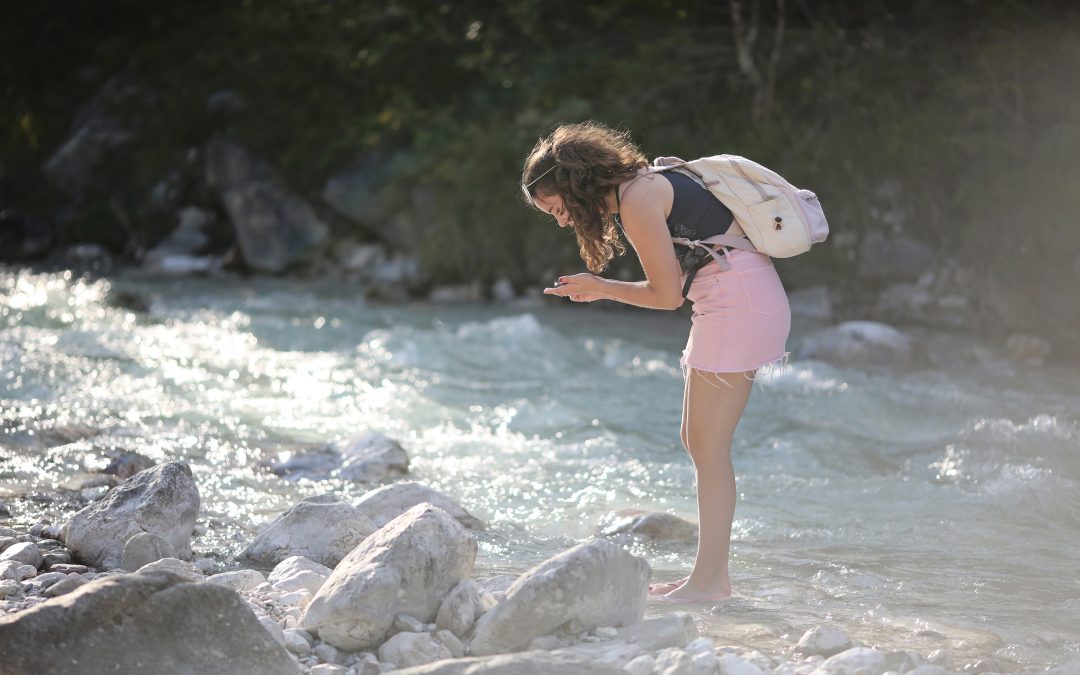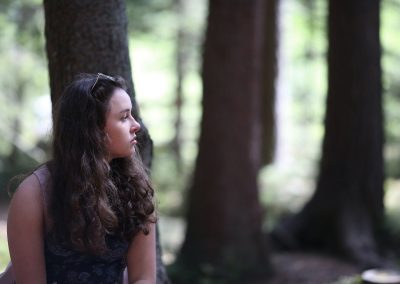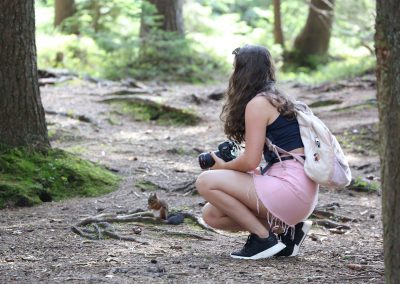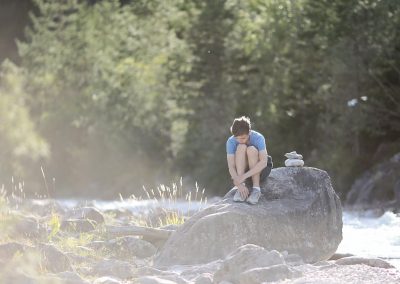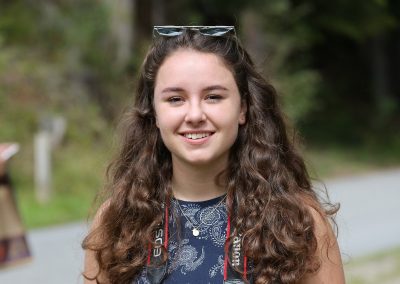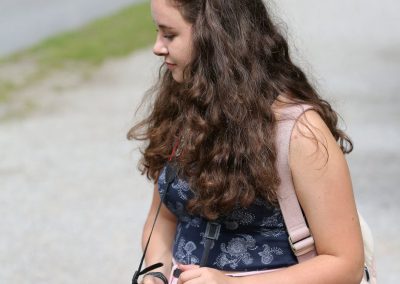Photography is a great avenue for teenagers to explore inspiring their creativity and getting them out and about. Photography is considered to be a cool thing to do and is equally attractive to boys and girls. Young people are much more visually literate today than they were in the past because of their use of social media, they naturally know what works in an image and what doesn’t. With this in mind and armed with camera equipment I took Rob and Issy on a photographic adventure.
You don’t need expensive equipment; a compact camera or mobile phone with a camera will do. If you do have a DSLR all the better. Either way initially it should be about fun and composition so if your teenager does own a DSLR I would start by putting the camera on Programme mode.
- Find somewhere where they can draw inspiration from the environment.
- The woods –we were spoilt for choice in the woods, it was teaming with wild life. We’d brought some nuts so were able to get up close to squirrels and birds.
- A lake or a stream – we followed a stream collected pebbles, used grasses and vegetation in the foreground to make our shots more interesting.
- An urban environment- we found beautiful old doorways and walls where the colour of the paint was muted and peeling off to provide interesting backdrops.
- It’s better if they are with a friend or sibling so they can compare shots and a little bit of rivalry helps with the motivation. Get them to take some portraits of each other, they can use them for their social media accounts.
- Different times of the day provide different lighting. My son Rob took an amazing picture at sunset. Morning or afternoon are the best times for the light. Midday should be avoided as this is when the light is harsh and shadows strong.
- Get them to experiment with taking shots close up and further away. Mixing up the framing can make bring different perspectives to the shots. The appeal of macro is hard to deny, Issy was fascinated by a dragon fly which she photographed using a macro lens.
- The rule of thirds. A little bit of instruction is okay, but you don’t want to turn it into a school project. Explain the simple principle of the rule of thirds that will help you take balanced and interesting photographs.(Imagine breaking an image down into thirds horizontally and vertically. This gives you four lines where the intersecting points are good positions for elements in your photo.)
- Give them lots of encouragement. Photography like all art is very subjective, anything goes.
- When you get home download the fruits of their labour play them as a slideshow on the TV for the rest of the family to see. Ask them to talk about their photos and share with the rest of the family.

